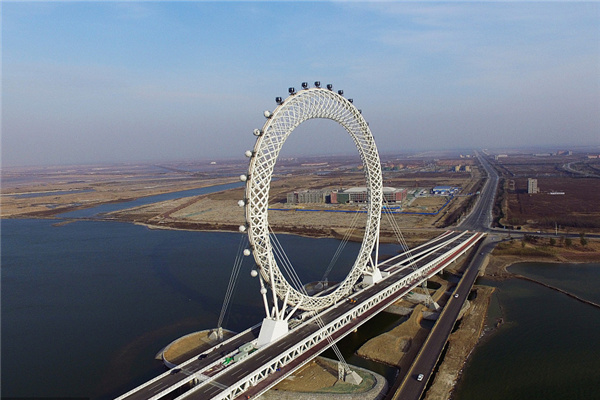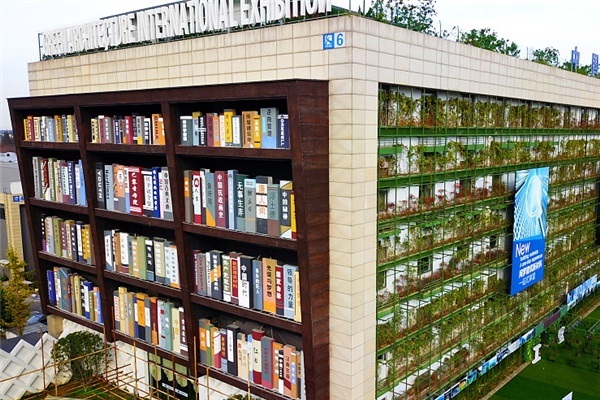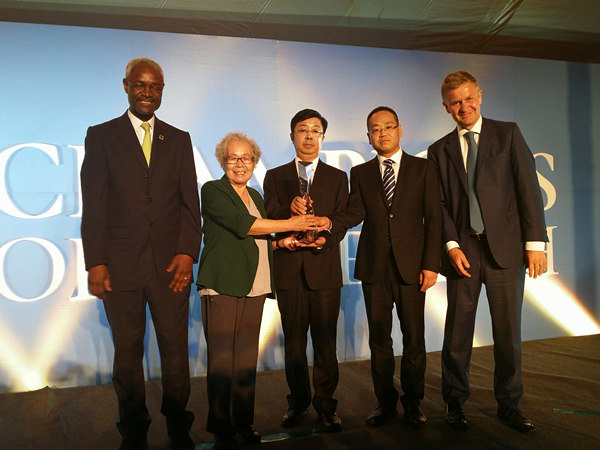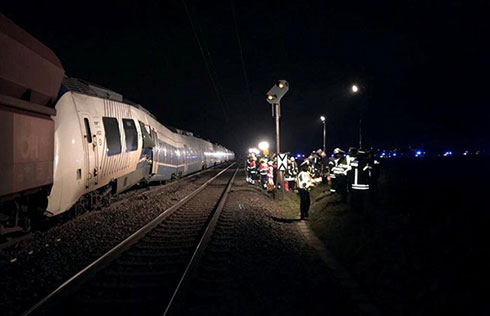

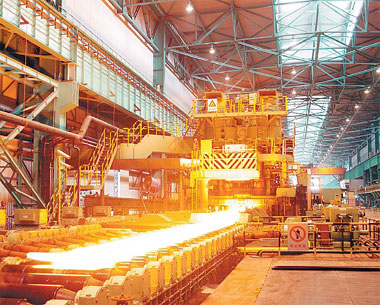
Some critics around the world have alleged that the steel industry in China has an unfair advantage because of government subsidies.
Yet Shen Wenrong, president of China's largest private steel maker Jiangsu Shagang Group, says he is a bit jealous of Mittal, the Indian steel giant, because it has a better business environment.
"If the financing conditions in China were half as good as that for Mittal (Lakshmi Mittal, CEO of Arcelor Mittal, the largest steel producer in the world), I could reach a capacity of 100 million tons of steel made solely in China," Shen says while sitting in a factory office overlooking the wide, languid Yangtze River.
"He was not as good as me 10 years ago."
With a capacity of 14.6 million metric tons of crude steel, Shagang Group is listed as the 16th-largest steel maker in the world by the International Iron and Steel Institute. Company sales reached 55 billion yuan in 2006.
Unlike Mittal, whose business blossomed with the backing of international investment banks and capital, Shagang grew from a 450,000 yuan village factory to one of the biggest steel makers in China largely through the industriousness and efficiency of its president and his fellow workers.
A big purchase
Shen first drew the industry's attention in 2001 when Shagang acquired the Dortmund-Horde steel mill from German industrial giant Thyssen Krupp for 30 million euros and began plans to ship its equipment back to China.
People were interested why the decision to buy the mill was reached only a month after it was offered for sale. Some wondered whether there were secret agreements, while others guessed that like many outbound investments the deal was supported by the Chinese government.
One thing Krupp's workers knew for sure is that when the Chinese arrived to prepare factory equipment for shipment, they worked hard.
As the Germans demonstrated in favor of a 35-hour work week, 1,000 workers from Shagang, an obscure steel maker from far-away China, began working over 12 hours a day with no weekends off. When German authorities cautioned Shagang to obey local labor laws, the Chinese began to take a day off each week - and worked in their dormitories.
The 250,000 tons of equipment and 40 tons of reassembly documents from the steel mill were finally moved to Jinfeng, a town along the Yangtze River, after a trip of 5,600 miles, arriving a year ahead of Shagang's schedule and two years earlier than German estimates.
That kind of effort, perhaps impressive to Europeans, is nothing new for workers at Shagang. Even now, Shen's 70-square-meter apartment is at the factory to save commuting time. His wife says he still often arrives at home after 11 pm.
Acquisition of the German factory proved to be a major turning point - it nearly doubled Shagang's capacity, and more importantly, its technology enabled the company to make more profitable high-quality steel products.

Humble beginning
Shen grew up in the poverty-stricken 1960s. He lost his father in early childhood, and his mother and six children lived on one meal a day. He joined a local cotton factory as a common worker in 1968 after graduation from high school.
At that time, under the planned economy, the obscure town had difficulty getting the steel that it needed for industrial development.
The factory where Shen worked, the largest in town, was encouraged by the local government to build a steel mill itself, so the factory purchased a set of equipment with 450,000 yuan they borrowed.
When Shen became the head of the factory in 1984, the annual steel output of Shagang was less than 10,000 tons. He soon found that there were growing demands from the housing market, so the company began to study making steel for window frames.
"To open your palm is not as good as to hold your fist," Shen says, knowing "Shagang would need its own fist product".
He sent workers to Shanghai and to steel plants in Northeast China to study window frames and learn the latest technology. Window frame steel earned the first big profit for Shagang as its output reached 130,000 tons and took 60 percent of the window frame market in China. By the end of 1988, Shagang had assets of 100 million yuan.
Many thought Shen and his workers could live a decent life at that level, but the man did not rest there. He heard in 1988 that a 75-ton electric arc furnace capable of producing 250,000 tons of reinforced steel bars was up for sale in the United Kingdom and he decided to buy it.
His decision met opposition from both the government and workers at his factory, who thought the deal would be too bold even for a State-owned enterprise, let alone a privately owned company, but Shen insisted that importing new technology was the only way to catch up.
"If it fails, we will use the equipment for a museum and I will be there selling tickets," he said at the time.
It took him three years to ship and reassemble the furnace. Shortly after the project was completed in 1992, China experienced an infrastructure boom which greatly benefited Shagang's growth and expansion.
Winter is coming?
Shen's bold moves at expansion have not always turned out according to plan. Faced with a surging trade surplus, China removed tax rebates for exported steel this year and has started to control the scale of steel enterprises.
"I can feel the winter is coming for the steel industry in China," says Shen. The withdrawal of tax rebates has had a significant impact on his business, as it is estimated that the profit of the company could be reduced by 1 billion yuan in 2007.
He also foresees that domestic demand for steel will shrink as policies tighten on real estate development.
His factory now has a capacity of almost 15 million tons of steel, and the man who well knows government policies is aware that it will be impossible to expand by building another factory.
Mergers and acquisitions are now an alternative strategy to reach his production goals of 25 million tons by 2010 and over 35 million by 2020.
Shagang purchased Jiangsu Huaigang Steel Co Ltd for $250 million in 2006. Although he declines to reveal what the next target might be, Shen says that his acquisition roadmap is to start with the nearer, easier and smaller steel makers.
While his plan sounds feasible, rooms in Shagang's cafeteria are labelled with bigger names and bigger dreams like Mittal and Arcelor.
"It is not impossible to go out and acquire a foreign steel mill when the right time comes," he says.
(China Daily 08/13/2007 page12)


